Does couture have a future?
“Haute couture should be fun, foolish and almost unwearable,” the French couturier Christian Lacroix reportedly said in 1987.
That seems such a long time ago, more so after all that has happened in the past year. With even prêt-à-porter sales on a steady decline, can this venerable art of producing the finest clothes requiring thousands of hours of design, craft, and construction, still get away with such frivolity? Are the bastions of old-school Parisian fashion still relevant, or do they even have a future in 2021 and beyond?
Haute couture’s fashion greats seem to think so as they confidently pushed on with their January shows, albeit virtually or audience-free because of COVID restrictions in France.
Are the bastions of old-school Parisian fashion still relevant, or do they even have a future in 2021 and beyond? Haute couture’s fashion greats seem to think so.
In the case of Giambattista Valli, whose gowns typically require 6,000 meters of fabric and 240 hours to make, there was no compromise when it came to fun, as he unveiled endless miles of ruffled taffeta and tulle in tiers of sumptuous ball gowns, coats and capes that stretched all the way to Seville, where his heart went aflutter this season to flamenco beats that his beribboned señoritas sashayed to with their strappy heels. In red, black, white and pink, the pieces were in his trademark voluminous silhouettes.
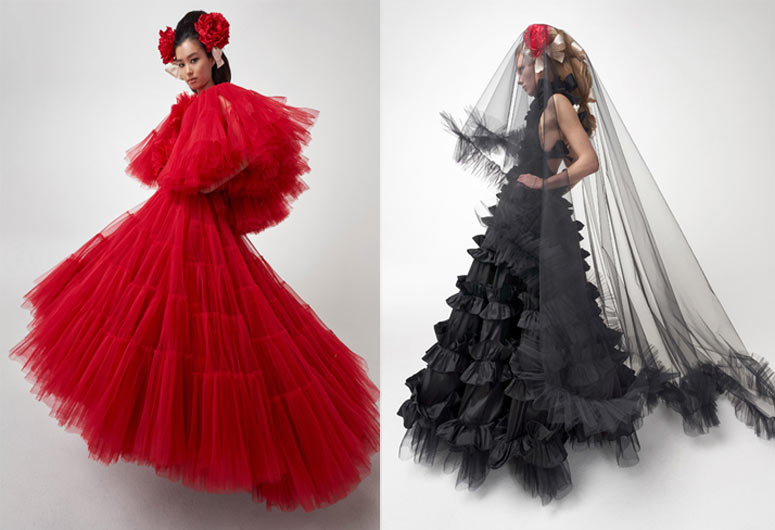
“Couture is not about decoration, it’s about volumes,” says the designer. “You have to be a sculptor.” His video featured a model with a bouffant hairstyle inspired by ’60s images of Benedetta Barzini and Marisa Berenson together with a male dancer, “a divine messenger descending from Olympus to earth to infuse the spirits with wisdom, goodness and elegance.”
Clothes are juxtaposed with houses, simulating a dreamlike journey as well as a dialogue between spaces and clothes, a coming together of cultures since “Seville is a place where the Spanish and Islamic cultures melt together and create a third culture.”
For Christian Dior’s Maria Grazia Chiuri, divining the future of couture is in the 15th-century tarot cards created for the Duke of Milan. The superstitious founder of the house actually believed in the tarot that helped him locate his sister, a member of the French Resistance, who disappeared.
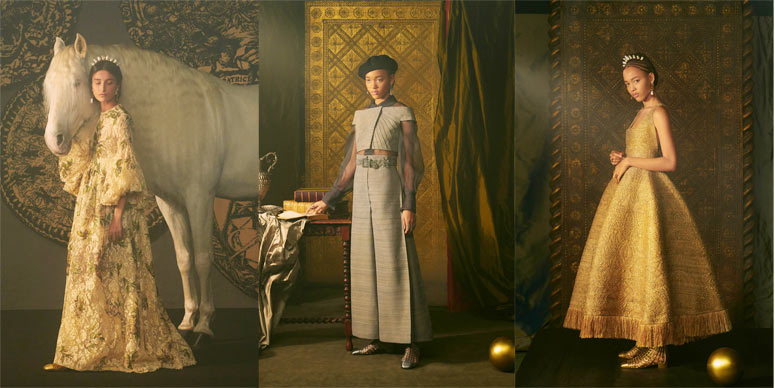
For these difficult times, Chiuri believes that “something magical can help us, to help us think better.” She asked director Matteo Garrone to produce a short film about a girl who enters the Moorish Revival castle of Sammezzano, where she goes through a labyrinthine journey to find herself, encountering the icons of the cards, from High Priestess to Temperance, Justice and Death, all dressed in Renaissance-inspired gowns with high-waisted corseted bodices in opulent brocade, and robes in precious hues with rich embroideries, contrasting with contemporary streamlined separates.
Kim Jones, for his debut collection at Fendi, also went on a journey — from England to Rome, through a labyrinth of glass, as inspired by Virginia Woolf’s Orlando, the time-traveling tale of androgynous transformation that he channeled through hybrid ensembles of half-blazer and half-evening gown as well as hourglass suits on male models with the reddest lipstick.
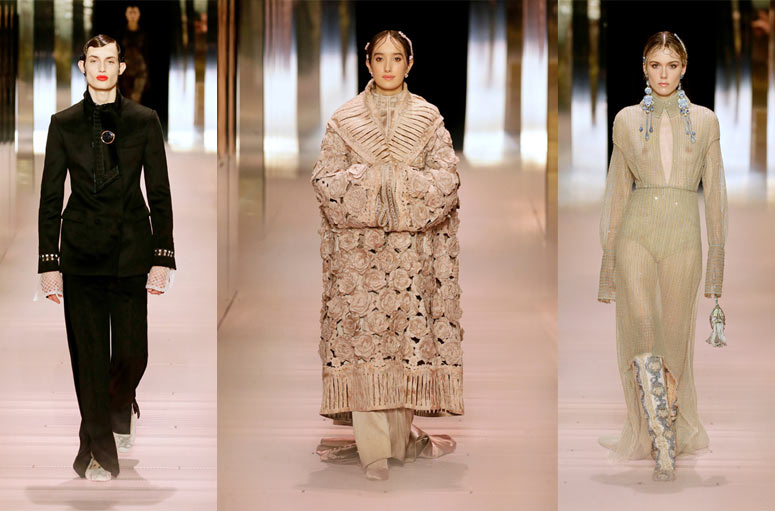
The women were in slinky 1930s Vionnet silhouettes and regal gowns caped in long trains. Frescoes from Charleston, the 16th-century Bloomsbury retreat in Sussex, appeared in beading, while the marbles of Galleria Borghese were seen as painted tailoring. The sculptures of Bernini were evoked in the draping.
At Chanel, Virginie Viard’s journey was to a village wedding in the South of France, recreated with arches of flowers and wooden chairs. The mothers had little suits in tweed and lace or skinny embroidered cardigans. The boys or girls dressed à la garçonne in old-fashioned boys’ clothes like waistcoats that recall Coco Chanel’s wearing of her lovers’ garments and her appropriation of menswear in her designs.

The guests are a little more daring, with lace jumpsuits or tweed coats paired with flouncy skirts ready to twirl around the town square to the beat of Gipsy Kings, who were invited to perform. Viard’s cuts are simple but with an emphasis on detail and craftsmanship from allied ateliers like Lesage, Vernoux, Hurel and Montex for embroidery; handpainted lace from Solstiss; and silk flowers from Lemarié.
Pierpaolo Piccioli at Valentino, on the other hand, did not offer any stories, declaring that “the narrative of the collection is the collection itself.” He said he wanted to work on surfaces, “not in a decorative sense, but workmanship which becomes the surface itself.”
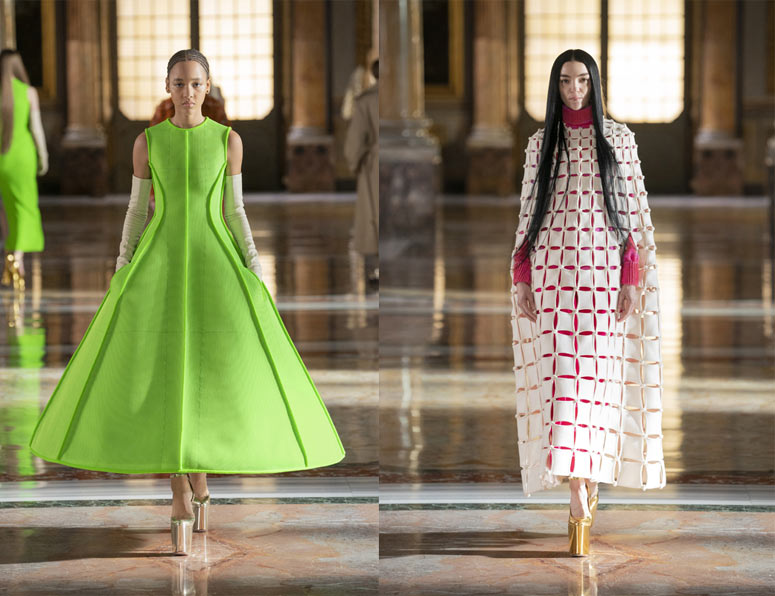
Thus, his clothes at first glance look like wearable RTW but with the finest fabrics and hand-finished tailoring — a kind of effortless, casual couture with genderless trench coats, hoodies, sweaters, board shorts and camisoles contrasting with latticed and lurex-fringed coats and sculptural capes.
At Schiaparelli, Texan designer Daniel Roseberry wanted to take the stuffiness out of haute couture clichés of fragile women in delicate lace through statement pieces for empowered women, incorporated in ensembles like a Madonna-and-child gold breastplate or a leather-embossed superheroine muscled torso with a matching bag. A molded bustier in glossy black is paired with a giant bow in the founder’s shocking pink. A stretch fabric dress is knitted with 200,000 Swarovski crystals.
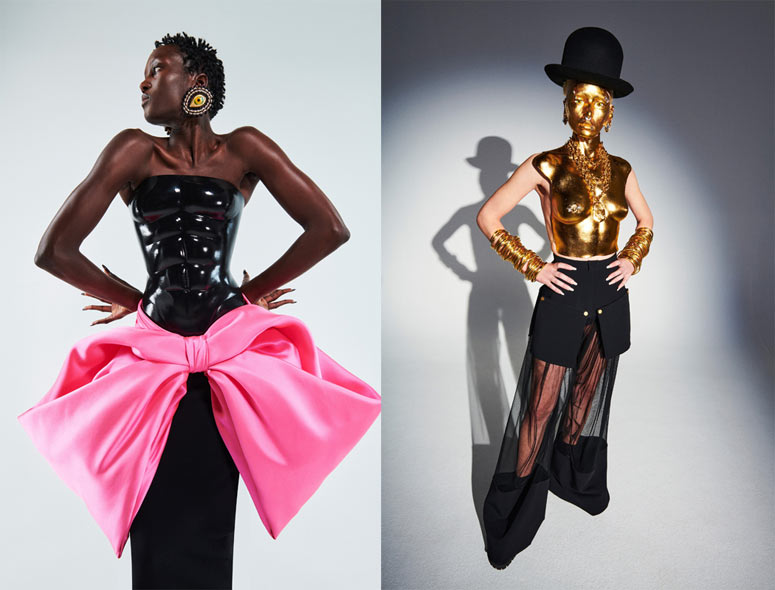
With less embellished pieces, he makes use of volume like a black column dress with huge folded sleeves. It’s what he calls “the joy of peacocking through clothes that make you aware of the fact of your body, that make you think of how you move in the world.”
Iris Van Herpen brings couture to the future with one-off pieces created through technology, particularly 3D printing. Inspired by Entangled Life, the book by Merlin Sheldrake on how fungi sustain life on earth, she used pleating that recalled the gills of mushrooms and created silhouettes and embellishments that channeled mycelium, the lace-like branches of fungus that forms a “wood-wide web” or underground system of communication — a metaphor that is so meaningful during these times of isolation.
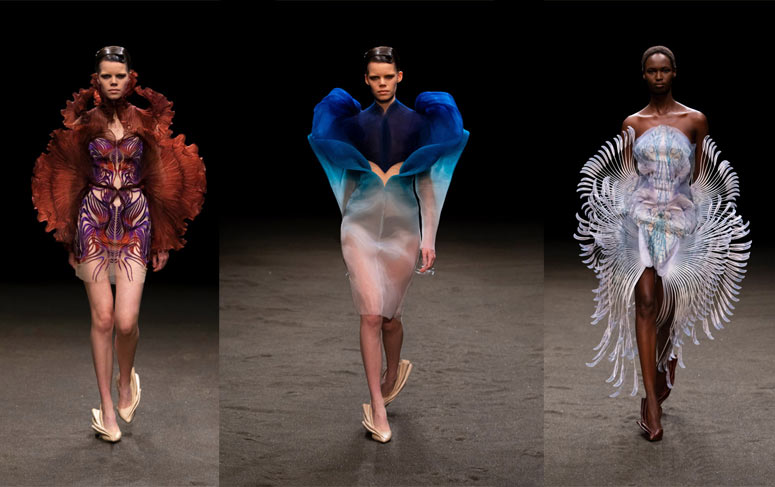
For Viktor & Rolf, couture took the form of a “rave” with a gritty edge that transported viewers to a “fantasy land of lighthearted escape.” Pieces from various garments were upcycled with “traditionally beautiful references put into a raw, young context.” The mood, they said, is “irreverent and almost casual but always elegant: an antidote to doom scrolling.”
Not so sure about the elegance, but the quirky parade can be quite entertaining during lockdown. But will the targeted audience of .001 percent (around 4,000 worldwide) buy them?
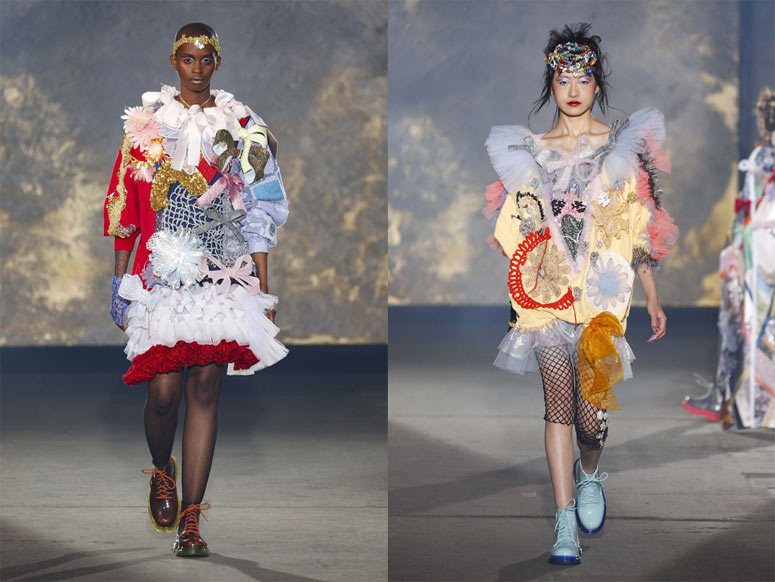
For that segment, money is no object just to acquire something truly special. Demand for men’s bespoke suits, for example, have gone up versus the slump in sales of the RTW variety, according to Alex Fury, author and fashion critic of AnOther magazine and The Financial Times, who was talking to people in the industry at the recent shows.
Giambattista Valli says he has “very extraordinary Chinese clients who are looking for these statement moments” and “it’s working well in the Middle East and there’s commitment in Europe.”
Of course, people will always want to dress up. Just when the lockdown eased up momentarily in New York, Ruba Abu-Nimah, Revlon creative director, noted how everyone was all dolled up, dressed in heels and clubwear, even just to eat at outdoor restaurants: “They looked almost ridiculous but then, you know, I could feel their pain.”


